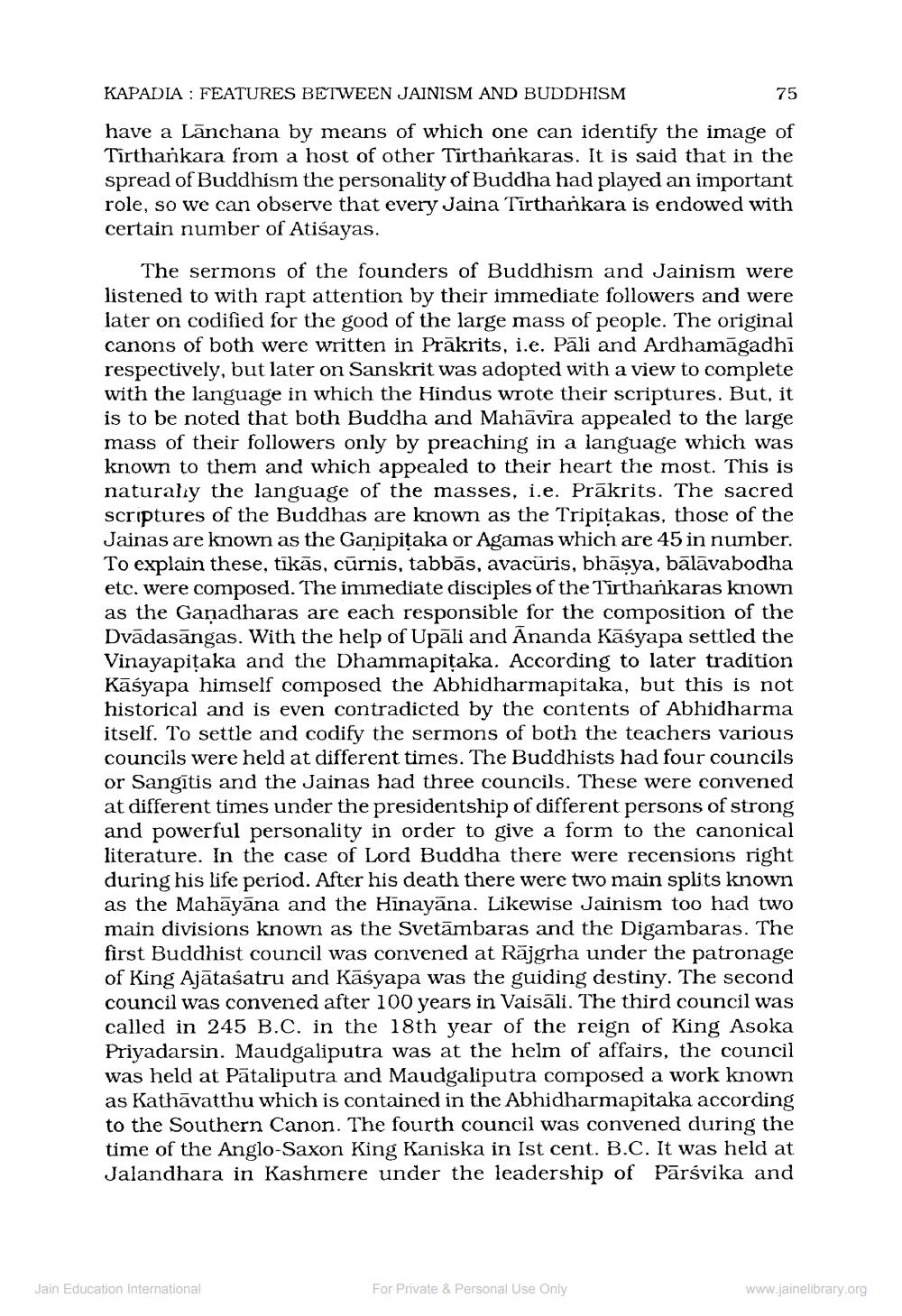________________
KAPADIA: FEATURES BETWEEN JAINISM AND BUDDHISM
have a Lanchana by means of which one can identify the image of Tirthankara from a host of other Tirthankaras. It is said that in the spread of Buddhism the personality of Buddha had played an important role, so we can observe that every Jaina Tirthankara is endowed with certain number of Atisayas.
The sermons of the founders of Buddhism and Jainism were listened to with rapt attention by their immediate followers and were later on codified for the good of the large mass of people. The original canons of both were written in Prakrits, i.e. Pāli and Ardhamāgadhi respectively, but later on Sanskrit was adopted with a view to complete with the language in which the Hindus wrote their scriptures. But, it is to be noted that both Buddha and Mahāvīra appealed to the large mass of their followers only by preaching in a language which was known to them and which appealed to their heart the most. This is naturally the language of the masses, i.e. Prakrits. The sacred scriptures of the Buddhas are known as the Tripitakas, those of the Jainas are known as the Ganipiṭaka or Agamas which are 45 in number. To explain these, tīkās, curnis, tabbās, avacüris, bhāṣya, bālāvabodha etc. were composed. The immediate disciples of the Tirthankaras known as the Ganadharas are each responsible for the composition of the Dvādasangas. With the help of Upali and Ananda Kasyapa settled the Vinayapitaka and the Dhammapiṭaka. According to later tradition Kasyapa himself composed the Abhidharmapitaka, but this is not historical and is even contradicted by the contents of Abhidharma itself. To settle and codify the sermons of both the teachers various councils were held at different times. The Buddhists had four councils or Sangitis and the Jainas had three councils. These were convened at different times under the presidentship of different persons of strong and powerful personality in order to give a form to the canonical literature. In the case of Lord Buddha there were recensions right during his life period. After his death there were two main splits known as the Mahāyāna and the Hinayana. Likewise Jainism too had two main divisions known as the Svetāmbaras and the Digambaras. The first Buddhist council was convened at Rajgrha under the patronage of King Ajatasatru and Kasyapa was the guiding destiny. The second council was convened after 100 years in Vaisāli. The third council was called in 245 B.C. in the 18th year of the reign of King Asoka Priyadarsin. Maudgaliputra was at the helm of affairs, the council was held at Pataliputra and Maudgaliputra composed a work known as Kathavatthu which is contained in the Abhidharmapitaka according to the Southern Canon. The fourth council was convened during the time of the Anglo-Saxon King Kaniska in Ist cent. B.C. It was held at Jalandhara in Kashmere under the leadership of Pārsvika and
Jain Education International
75
For Private & Personal Use Only
www.jainelibrary.org




